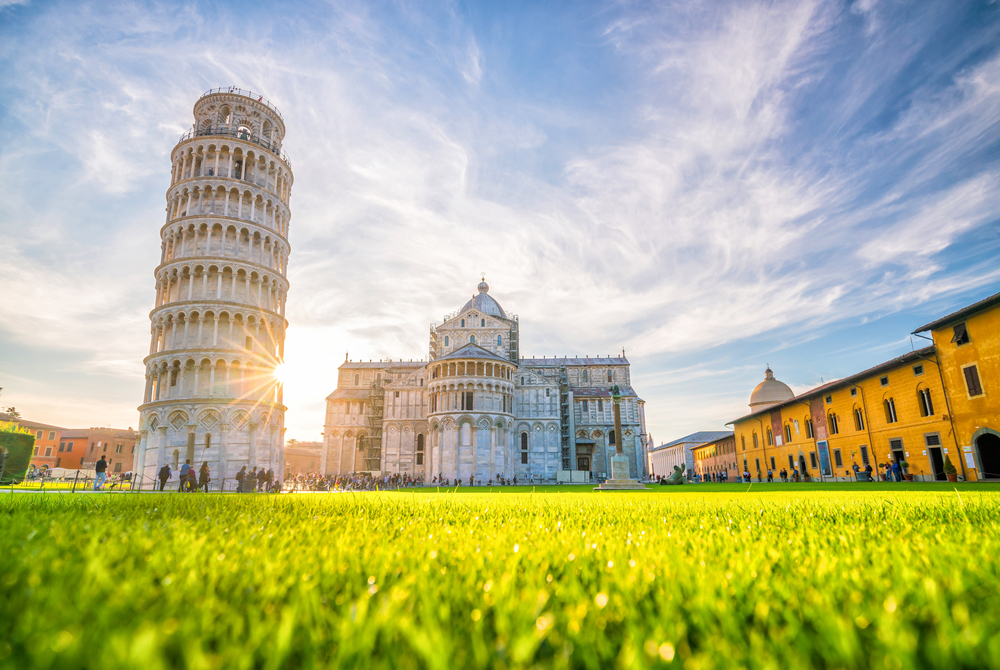Leaning Tower of Pisa History
As the city of Pisa grew as an important Italian seaport, its people wanted to emphasize its significance with a cathedral complex. This so-called “Field of Miracles” included a baptistery, a cathedral & of course, the Leaning Tower of Pisa was then built to serve as the bell tower. Construction of the Leaning Tower of Pisa began in 1137, but it was not completed until the mid-14th century due to war, debt, and other interruptions which stalled its construction.
Trying to find out the exact history of the Leaning Tower of Pisa is a little bit more complex than you may think. The design of the tower has historically been attributed to the 12th century Italian artist Bonanno Pisano, who was most well-known for his bronze castings. While his name was found in a shard of cast at the foot of the tower in the early 19th century, some historians argue that this is not evidence of his contribution and that the cast may instead be related to the cathedral that was destroyed in the late 16th century. In more recent times, some researchers have suggested that Diotisalvi might have been the original architect, because he designed the Baptistery and the bell tower of San Nicola in Pisa, and all of these works show some resemblance to each other. Guglielmo has been said to have lain the foundations of the tower, and a builder named Gerardo di Gerardo has also been credited with the early phases of construction. Giovani di Simone was involved in the second phase and Tommaso Pisano in the final phase.
Florence & Pisa – Day Trip from Rome
Every day (except Mon) at 8am 12 hrs
Why does the leaning tower of Pisa lean?
So obviously everyone knows the tower because it leans – but the tower was not purposefully designed to lean. Due to the soft ground that the tower was built on and shifting soil upon which it was built, it served to destabilize the foundation. The tower had begun to lean by the time its builders reached the third story. Over time, it began to fall about two millimeters per year, until it was leaning at an angle of 5.5 degrees. Restoration work has taken place in the late 20th century to make sure that the tower doesn’t fall over, however, the leaning tower of Pisa now leans a little less than 4 degrees. It is now thought that the tower will lean at its current angle, without falling, for another two centuries but in fact, it may never fall. In the wake of this careful restoration project and the attraction’s re-opening, there has never been a better time to visit the Leaning Tower of Pisa!
How Was the Leaning Tower of Pisa Used?
In legend, Galileo used the tower to prove that the speed of a falling object is independent of its mass. He supposedly dropped different weights of cannonballs from the top of the tower. The Germans were also suspected to have used the tower for observation during the Second World War. Eventually it became a major tourist attraction, full of people attempting to take the perfect photo. The Leaning Tower was closed to the public from 1990-2001 for stabilization, but it has since been reopened.
The tower was on the brink of collapse not long ago. However, because of the restoration project conducted in the 1990s, which called upon the expertise of mathematicians, scientists, architects, and other talents, it is now thought that the Tower of Pisa will lean at its current angle, without falling, for another two centuries. In fact, it may never fall.





I am so grateful to find your particular post. I have bookmarked this website and I will keep visiting you for further such interesting posts.